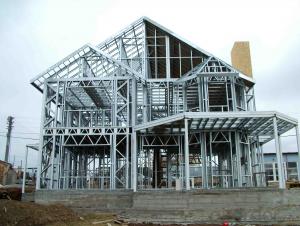Inverter Canadian Solar
Inverter Canadian Solar Related Searches
Best Inverter Solar Panel Solar Panel On Roof Rack Inverter To Solar Panel Ratio Solar Panel Decking Lights Solar Panel Inverter Box 1000 Watt Solar Panel Inverter 12 Volt Solar Panel Inverter Plastic Solar Lanterns Buy Solar Panel Inverter Solar Panel Inverter CostHot Searches
Type Of Inverter For Solar Types Of Inverter For Solar Used Solar Inverter For Sale Inverter Size For Solar System Solar Edge Inverter For Sale 5kw Solar Inverter For Sale Solar Inverter For Sale Solar Inverter For Battery Solar Inverter For Split Ac Solar Inverter For Laptop Solar Inverter For Fridge Solar With Inverter Price Solar Inverter With 2 Battery Solar Inverter Price In China Best Solar Inverter In China Solar Inverter Price In Dubai Solar Inverter Price In Uae Solar Inverter Price In Kenya Solar Inverter Price In Kerala Solar Hot Water Collectors For SaleInverter Canadian Solar Supplier & Manufacturer from China
Okorder.com is a professional Inverter Canadian Solar supplier & manufacturer, offers integrated one-stop services including real-time quoting and online cargo tracking. We are funded by CNBM Group, a Fortune 500 enterprise and the largest Inverter Canadian Solar firm in China.Hot Products
FAQ
- Yes, a solar inverter can be used with a solar-powered healthcare system. A solar inverter is an essential component of a solar power system as it converts the direct current (DC) produced by solar panels into alternating current (AC) that can be used to power various healthcare devices and equipment. This allows for the efficient and reliable operation of a solar-powered healthcare system, ensuring uninterrupted access to essential medical services even in remote or off-grid locations.
- Shading can significantly affect the performance of a solar inverter. When certain parts of a solar panel are shaded, the overall power output of the system decreases. This is because shaded cells create resistive losses, reducing the current flow and overall efficiency of the inverter. Additionally, shading can cause a phenomenon known as the "partial shading effect," where the entire string of panels is affected even if only a small portion is shaded. To mitigate these issues, technologies like bypass diodes are used in solar panels to minimize the impact of shading and ensure optimal performance of the inverter.
- Yes, a solar inverter can be used for three-phase power systems. Three-phase solar inverters are specifically designed to convert the DC power generated by solar panels into AC power for three-phase electrical systems. These inverters are capable of handling the higher voltage and power requirements of three-phase systems, making them suitable for commercial and industrial installations.
- A solar inverter handles power factor correction by continuously monitoring the power factor of the electrical load and adjusting its operation accordingly. It applies various control techniques to ensure that the power factor is maintained close to unity, ultimately improving the efficiency and stability of the solar power system.
- The temperature can significantly affect the performance of a solar inverter. As the temperature increases, the efficiency of the inverter decreases. This is because the internal components of the inverter can overheat, leading to a decrease in power conversion efficiency. Additionally, high temperatures can also cause voltage drops and create thermal stress on the components, which can further impact the performance and longevity of the inverter. Therefore, it is crucial to consider temperature management and cooling mechanisms to ensure optimal performance and reliability of a solar inverter.
- A solar inverter handles fluctuations in solar panel output due to temperature changes by employing a maximum power point tracking (MPPT) algorithm. This algorithm continuously adjusts the operating voltage and current of the inverter to ensure that it operates at the maximum power point of the solar panels, despite the temperature changes. By dynamically adapting to the varying output of the panels, the inverter optimizes the energy conversion process and allows for efficient utilization of the available solar energy.
- A solar inverter handles grid disturbances such as voltage sags, swells, and flickers by employing various protective mechanisms. It actively monitors the grid's voltage levels and reacts accordingly to maintain a stable and reliable power output. During voltage sags, the inverter adjusts its output voltage to compensate for the drop and ensure a consistent energy supply. In the case of swells, the inverter quickly detects the excessive voltage and disconnects from the grid to prevent any damage. Flickers, caused by rapid voltage fluctuations, are minimized by the inverter's ability to rapidly respond and stabilize the power output. Overall, solar inverters play a crucial role in mitigating grid disturbances and safeguarding the solar power system's performance and longevity.
- Yes, a solar inverter can be used in areas with high levels of electromagnetic interference (EMI) as long as it is properly shielded and designed to withstand such conditions. However, it is important to choose an inverter that meets the necessary EMI compliance standards to ensure reliable and efficient operation in these environments.














































